The 2010 Bordeaux White Wine Harvest is about done. The red wine harvest will be in full bloom next week. Harvester’s will be picking merlot and a few producers might begin working on young vine cabernet sauvignonas well.
However, there is more to story. In case you forgot, they produce Bordeaux wine in white too!
Chateau Haut-Brion produces the finest Bordeaux white wine. Sadly, due to its price and scarcity, it’s often difficult to find. At Chateau Haut Haut Brion and Chateau La Mission Haut Brion, every conceivable step is taken to produce the finest Bordeaux wine possible. One interesting choice is that, Jean-Philippe Delmas has his harvesters start picking the grapes at night.
According to Delmas, the cool and often cold night air retains the freshness in the fruit and retards oxidation. Chateau Haut Brion and Chateau La Mission Haut Brion finished their white wine harvest September 10.
At Smith Haut Lafitte, they began harvesting their sauvignon blanc September 2. According to Fabien Teitgen, the fruit shows good promise. Alcohol levels range from 13-13.5% potential alcohol. The fruit has between 5-5.5 g total acidity along with a pH of approximately 3.1. This reflects potential ripeness and sugar levels in the fruit.
While most producers in the Medoc are just finishing their white wine harvest, Jean-Guillaume Prats said, “Chateau Cos d’Estournel is only starting to pick the sauvignon blanc and semillon fruit for their white wine”. The grapes are grown north of the chateau in the Jau-Dignac/Loirac regions.
At Valandraud in St.Emilon, Murielle Andraud is still harvesting her white grapes. They began their harvest September 14 with the young vines. Murielle has stopped picking for the moment as they have finished with the young vines. Next week, she will finish harvesting the older vines for their white Bordeaux wine. It will a week or two until they begin working on their young merlot vines.

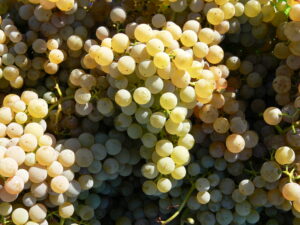
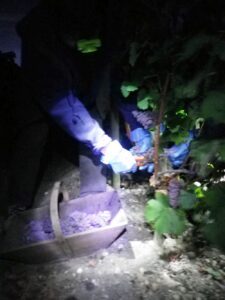
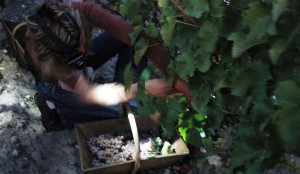
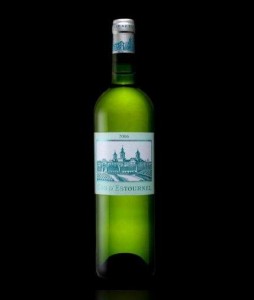
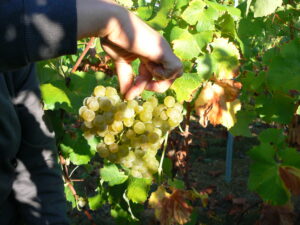
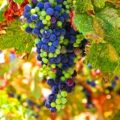


4 Comments
I would love to know more about your vineyards and wine as i am a descendant of French Huguenots exploring in America from the first settlements in Jacksonville, my home, and also Charleston, South Carolina, the permanent settlement of the French Explorers after being massacred by the Spanish in the n.e. Florida Fort Caroline and Fort Matanzas sites in the late mid 1500s. I found your site via Yahoo.
I would be gratful to you for information concerning
your compnay and even your product. I need to learn about this. Merci, Charles Maurice
Stefan, Thank you for the great reply! Next time I am in Cotes de Castillon, I will look for those wines.
Stefan… Thank you for the nice note and comment. Where did you visit when you in Bordeaux in August and what did you taste that you really liked?
Hi,
I stayed, with a few friends, for a wonderful week at a place called St-Pierre-de-Bat in the Premier Côtes de Bordeaux, not far from Cadillac. We stayed in Ch. St-Pierre which belongs to Ch. de Haux a couple of miles away.
An eye-opener was the generally very high standard of the wines, both red and white, of this area. There was no shortage of bottles from the lovely 2005, still a few years away from maturity. The Ch. de Haux Rouge, especially the Grand Cuvée, is a very good exampel. The regular is for drinking pretty soon, but the Grand Cuvée (old vines, better selection, more new oak) is if not of classed-growth quality, very much a treat for any lover of true Bordeaux. But most is sold in Denmark (and the rest to me…) If you stop by the shop at Ch. de Haux, just outside the village of Haux, you can find bin-end gems like the Clairet (not a rosé, according to the owners, but a very light red wine) and several older (3-5 years old) vintages white wine. They take on an extraordinary smoothness and harmony, and also richness, when aged a little.
Lastly, on our way back to Sweden, we stopped by at Ch. Lapeyronie in Côtes-de-Castillon. They farm 5 hectares, half in C-d-Castillon and half in C-d-Francs nearby. The wines are of garagiste-quality. Old vines, low ‘rendement’ (30-35 hl/ha), no peticides/insectides/synthetic fertilisers, handpicking and so on. A family operation where the wife (teacher of oenology at the University in Bordeaux) is winemaker, the husband is the (very friendly) vineyard and cellar worker, and the grown-up kids help along. (A daughter, by the way, could easily have a career as a model, I happened to notice.) Could and should be discovered on a greater scale. The wine, I mean. Salut!
Stefan E.